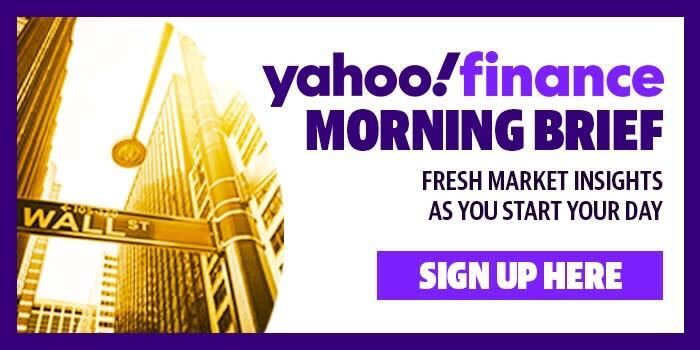The Fed's next 'rate hike' has already arrived
This is The Takeaway from today's Morning Brief, which you can sign up to receive in your inbox every morning along with:
The chart of the day
What we're watching
What we're reading
Economic data releases and earnings
Another interest rate increase is creeping its way through the economy. But this time it didn’t come from the Federal Reserve. Spooky season is upon us, and so is the phantom rate hike.
The recent surge in Treasury yields has unleashed an array of anxiety goblins, from fears of a stock market slump to worries about ballooning interest payments on government debt.
But policymakers also see rising yields as a way to slow the economy without having to go through the trouble of raising rates again.
In effect, elevated yields can do the work of central bankers for them — functioning as a rate hike without instituting an actual rate hike.
This isn't the only time recently where we've seen a phantom rate hike. In March Fed Chair Jerome Powell noted that the bank failures and associated turmoil essentially acted as another rate hike.
Read more: What the Fed rate-hike pause means for bank accounts, CDs, loans, and credit cards
Long-term Treasury yields have a direct influence on households and businesses. They impact the cost of mortgages, car loans, and taking on other types of debt. So increasing yields have a tightening effect, slowing economic activity.
Though it's receded this week, the 10-year Treasury yield (^TNX) has risen to levels last seen in 2007, climbing roughly 30 basis points since the Fed’s meeting in September.
Fed Vice Chair Philip Jefferson pointed to the rise in yields and their impact in a speech earlier this week, pledging to "remain cognizant of the tightening in financial conditions through higher bond yields ... as I assess the future path of policy."
Jefferson said that the Fed is in a particularly sensitive period of managing risk, having to balance between the twin risks of too loose and too tight.
Other Fed officials have chimed in on the bond market acting like a pinch-hitter.
“We're just kind of keeping a very close eye on that, and then we'll see how these higher rates feed into what we're trying to do in policy,” said Fed Governor Chris Waller on Wednesday.
But as with the Fed’s previous rate increases, a rise in inflation or other unfavorable observations could force the central bank to move. And if yields slide, their tightening effect would diminish, creating a greater need for the Fed to enact a genuine hike instead of relying on a substitute.
There’s a circular logic to all of this, which means it can turn on a dime.
As Minneapolis Fed President Neel Kashkari said earlier this week, it’s possible higher bond yields will mean less work for the Fed. But if those yields are higher because the market’s expectations for the Fed are changing, the Fed might have to follow through on those expectations to keep those yields high.
In other words, there's a wobbly Jenga tower of expectations.
“It’s hard for me to say definitively that because they moved, we don’t have to move,” Kashkari said. “I don’t know yet.”
For now, as some Fed officials think the focus of the tightening campaign should shift from how high to raise the policy rate to how long to hold the policy rate at restrictive levels, the latest data might support more of a let-the-bond-market-do-the-work approach.
While the likelihood of a rate hike next month has fallen, that may be because one has already come through. It just didn’t come from the Fed.
Hamza Shaban is a reporter for Yahoo Finance covering markets and the economy. Follow Hamza on Twitter @hshaban.
Click here for the latest economic news and indicators to help inform your investing decisions.
Read the latest financial and business news from Yahoo Finance

